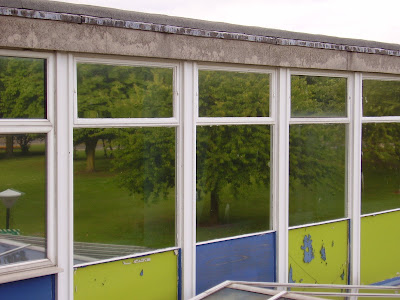 A hundred years ago my predecessors still appeared to need to know the size of each field in the parish because some forms of charge (reformed versions of historic tithes) remained part of their income into the 1930s. At the weekend we discovered the map printed in 1900 explicitly for this purpose which the then Rector of Great Coates owned, a version of the standard Ordnance Survey map of the time but on a quite huge sheet on a roll about my height.
A hundred years ago my predecessors still appeared to need to know the size of each field in the parish because some forms of charge (reformed versions of historic tithes) remained part of their income into the 1930s. At the weekend we discovered the map printed in 1900 explicitly for this purpose which the then Rector of Great Coates owned, a version of the standard Ordnance Survey map of the time but on a quite huge sheet on a roll about my height.We are looking forward to a new colleague moving into St Nicolas’ Vicarage in August, and five of us were clearing out the study (which was colonised as a Parish Office twelve years ago) and garage (only built a little before then yet the home of a spectacular range of accumulated paint tins, Summer Fair equipment, disused furniture, and much more). The most useful discovery was an industrial size strimmer which none of us knew was there, but which we presume others remember, the church owns and was used in the churchyard. Other than that, the amount of sheer rubbish outweighed the amount of useful or valuable things which we shifted to the church shed and other appropriate locations.
In such processes one always expects to find things left behind by recent incumbents, but we were very surprised to find in the map something left behind by the incumbent who’d lived in the Old Rectory opposite fifty years before the present 1950s house was built.
Both Great Coates and Little Coates parishes are shown as entirely rural - housing spreading from Grimsby to the east is poised to grow across the eastern boundary of the Little Coates parish (Little Coates Primary School was yet to be built to serve what would be the first terraces in Little Coates parish, and it has events to celebrate its centenary this week) but was not to grow further westwards into the Great Coates parish until the 1960s.
The ancient civil and ecclesiastical parish of Great Coates corresponds to today’s Freshney ward, but even today some who live in the old village area are not reconciled to being seen as part of Grimsby. In the late 1960s St Nicolas’ had the portion of its ecclesiastical parish where the Willows estate was about to be built shifted into the then ecclesiastical parish of Little Coates. In the 1970s there were protests both when the civil parish was abolished and its area incorporated into Grimsby and also when the ecclesiastical parish was merged with that of Bradley and Little Coates. In the 1990s a new civil parish was created for Great Coates with boundaries carefully set to cover only the old village area rather than the whole of the old parish, and few weeks ago one of the parish Councillors told me she felt it would be good to move the civil parish out of the Freshney ward into the rural ward to the west as this was an area with which they have more in common.
















